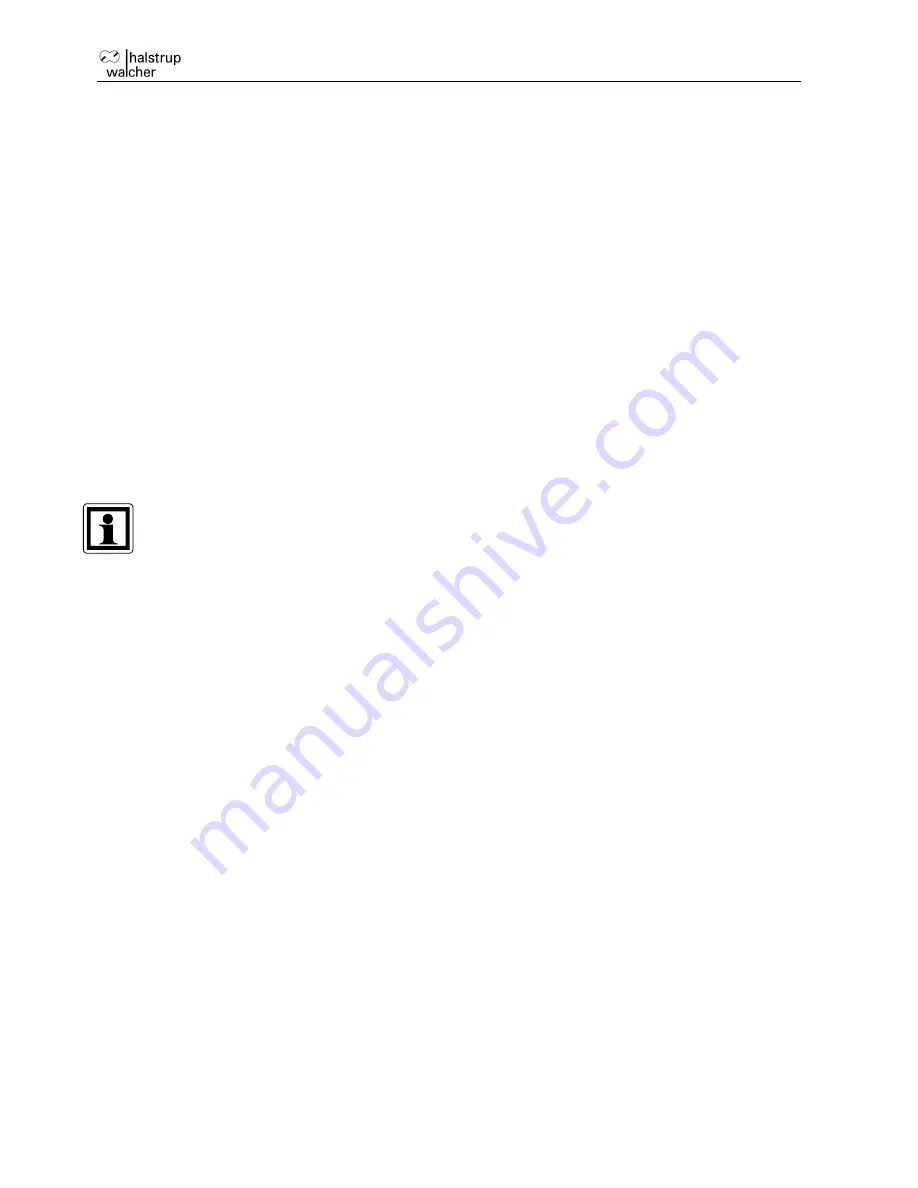
P26 Instruction Manual
13
4 Zero-point calibration cycle
External influences such as temperature, position or ambient pressure can shift the instrument’s
zero point, i.e., the value displayed when the pressure ports are open. Calibration is the process
by which the instrument automatically registers this shift and figures it into the currently
displayed pressure value. The zero-point calibration is performed in two stages, which are
shown in the top line on the display (optional).
“
0” Measuring signal of the zero point is being determined.
“
P” Pressure is being reconfigured
The interval between two zero-point calibrations can be adjusted in the Settings menu.
Zero-point calibration can also be started with the Enter key if the device is in Measurement
mode.
The P26 does not respond to keys being pressed during calibration.
4.1 External zero-point calibration(Option)
The ext. zero-point calibration is available as an Option. To initiate an ext. zero-point calbration,
the extra pin on the output connector must be connected to +24 V.
INFORMATION:
If a zero-point calibration is initiated via the serial interface or optional ext. zero-point
calibration, this will still be carried out. In this case, it doesn’t matter if the zero-point
calibration is deactivated or the P26 is in the menu.
5 Overpressure protection
The P26 has an internal overpressure safeguard that protects the precision pressure
measurement capsule from damage. (Overload range: 200 x [max. 600 kPa])
6 Display (optional)
The measured values and the menu are shown on the display. The top line is the information
line. This line displays the type of measured value or the status of a zero-point calibration. The
measurement value will be displayed on the central line. If the permitted measuring range is
exceeded or not reached, the figures are replaced by corresponding arrows. The bottom line
displays the unit, with the first two digits showing the status of the two relays.
7 Menu (optional)
If the P26 includes a display, you can use the menu to adjust various settings. Press the Menu
key to bring up the menu.
In Menu mode, the parent menu item always appears in the top display line. The middle line
always shows the current sub-menu item or value to be changed. The bottom line displays units
or other help texts.
Start the Menu mode by pressing the "Menu" key. It can be protected with a four-character
password. At the main menu level, “Menu” is displayed in the top line and “Display” in the
middle line. Select your desired sub-menu by pressing the “^” and “>” keys. Press “Enter” to go
to a sub-menu or enter a value. Press the “Menu” key to go to the next menu level or to stop
entering values.
























